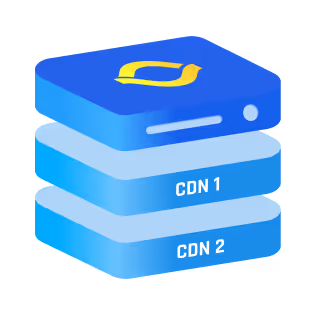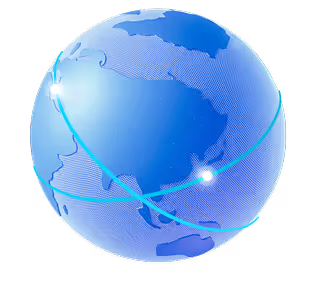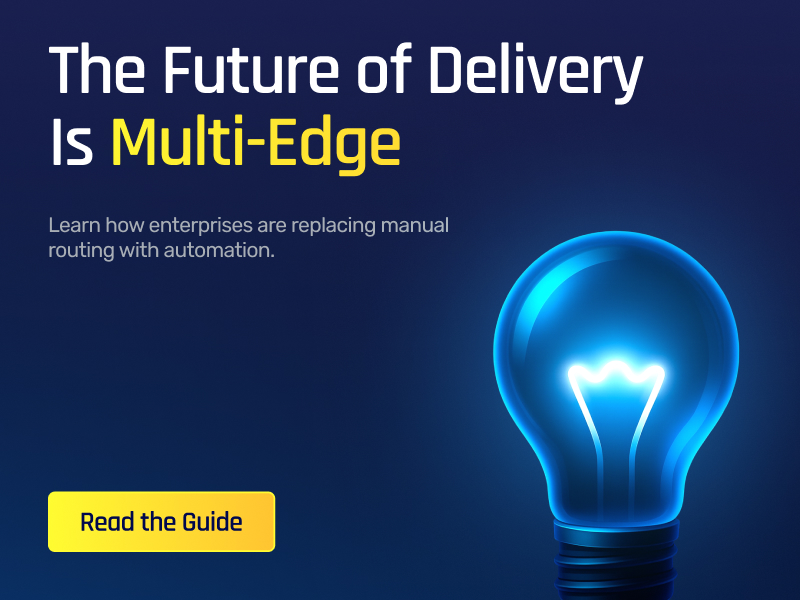What if you visit your favorite website only to be met with a blank screen? That’s the silent chaos of a CDN outage, when the internet’s delivery backbone goes dark.
A Content Delivery Network (CDN) helps websites load faster by distributing content across global servers. But when this system breaks down, a CDN outage, entire websites can slow to a crawl or disappear completely.
What is a CDN Outage?
A CDN outage (Content Delivery Network) is a disruption or breakdown in the operation of a CDN service. CDNs are commonly used by websites and online services to efficiently provide material to users by caching content and also serving dynamic content on servers located in different places.
During a CDN outage, the CDN infrastructure may have technical faults or become unreachable, preventing users from accessing cached content and dynamic content. As a result, users may encounter poor loading times, broken links, or the complete unavailability of certain website elements or services.
Why Do CDN Outages Happen?
CDN outages can happen for a variety of reasons, such as network problems, hardware malfunctions, software defects, cyber-attacks, or human errors. The impact of a CDN outage varies based on the severity of the disruption, the geographical distribution of affected servers, and the CDN's relevance in delivering vital content or services.
Because website owners and service providers frequently rely on CDNs to ensure consistent and timely content delivery, a CDN outage can have serious ramifications for user experience, business operations, and overall online availability.
While multi-CDN platforms provide resilience against CDN disruptions, it is important to note that some CDN providers may prioritize stability over introducing new services quickly. The introduction of new features bears the risk of potential failures, which could result in outages or poor performance. CDN providers frequently spend a significant amount of time testing and validating new features to ensure they work reliably and smoothly with their existing infrastructure.
This conservative approach contributes to the stability and durability of CDN services, even if it results in a slower rate of feature development when compared to other fast expanding technologies. For CDN providers, balancing innovation with the need for a robust and stable content delivery infrastructure remains a critical factor.
{{cool-component}}
How a CDN Outage Affects Users and Businesses
When a CDN outage strikes, users are often the first to feel it, and businesses soon follow. A sudden cdn error can result in images not loading, pages timing out, or an entire website becoming unreachable. This doesn’t just frustrate users, it can tank conversion rates, spike bounce rates, and hurt brand trust.
For eCommerce sites, a cdn down situation during high-traffic moments like sales can mean major revenue loss. Media platforms may experience video playback errors or long buffering times. Even internal dashboards or SaaS tools relying on CDNs can fail to load, disrupting operations.
Beyond user experience, CDN outages can also hurt SEO rankings if Google can’t properly access or render your site during a crawl.
How to Know if a CDN Outage Is Happening?
Not sure if you're facing a cdn outage? Here are some quick ways to check:
- Use third-party tools like DownDetector, Pingdom, or CDNPerf to see if others are reporting issues.
- Check the status page of your CDN provider (e.g., Cloudflare, Fastly, Akamai).
- Run basic diagnostics from your origin server to confirm if the issue is CDN-related or server-side.
- Look for common errors like 502 Bad Gateway, cdn error, or sudden site-wide slowdown.
Keeping synthetic monitoring in place can alert you to outages faster than your users notice them.
Common Cases of CDN Outages
- Cloudflare Outage (November 2–4, 2023): Cloudflare experienced a ~40-hour outage due to a power failure at a primary data center in Oregon. The incident disrupted its control plane and analytics services, affecting various enterprise functionalities and highlighting the risk of infrastructure-level failures.
- Fastly Outage (June 8, 2021): Fastly suffered a major disruption impacting high-traffic websites globally. A software bug during a configuration update caused its edge servers to return errors, halting content delivery for services dependent on Fastly's network.
- Bunny CDN Outage (November 11, 2024): Bunny CDN encountered a 25-minute global outage where users were served intermittent 502 errors. Although brief, the disruption affected multiple websites and highlighted how even smaller-scale providers can experience sudden, widespread failures.
- Amazon CloudFront Outage (January 28–29, 2024): A CloudFront disruption caused widespread “404 NoSuchBucket” errors, primarily across EU regions. The issue stemmed from integration problems with S3 origin buckets, underlining how interdependent cloud services can create cascading failures.
Why Multi-CDN is a Solution for CDN Outages?
Multi-CDN (Multiple Content Delivery Network) is considered a solution for CDN outages because it provides increased resilience and redundancy in content delivery. Here's why:
- Diverse network paths and fault tolerance: Implementing a multi-CDN setup is a recommended solution to protect businesses from CDN outages that can impact revenue and conversion rates. By distributing traffic across multiple CDNs, companies can mitigate the risk of network outages and ensure business continuity.
- Improved performance: Multi-CDN setups offer advantages in mitigating the impact of local CDN outages and reducing latency for end users. While individual CDNs may experience localized outages, which could result in disruptions or increased latency, a multi-CDN approach allows organizations to route users to alternative CDN data centers in the same region. By dynamically selecting the optimal CDN based on real-time conditions, organizations can redirect traffic away from affected CDNs and minimize the impact of local outages. This helps optimize content delivery performance and ensures a smoother user experience, reducing the perception of an outage even in the presence of localized disruptions.
To successfully implement a multi-CDN strategy, organizations must undertake careful planning and management due to the inherent complexity of managing multiple platforms. Factors such as CDN selection, content synchronization, traffic routing algorithms, and maintaining consistent security services need to be considered.
How to Prepare for a CDN Outage
You can't always prevent a cdn down event, but you can be ready for it.
- Use a Multi-CDN Setup: Route traffic dynamically to an alternate provider when one fails.
- Implement Failover Rules: Serve fallback content directly from your origin or a basic backup page.
- Add Monitoring Tools: Keep real-time visibility over latency, response times, and content availability.
- Set Up Error Handling: Customize friendly error messages instead of letting pages break silently.
Planning ahead helps preserve user trust, even when your infrastructure hits a hiccup.
Conclusion
The internet feels invisible when it works, and painfully visible when it doesn’t. CDN outages remind us how much of the web’s speed and stability depends on silent, behind-the-scenes infrastructure.
Whether you're a developer, founder, or product manager, resilience isn’t just about uptime, it’s about designing for disruption before it arrives.
FAQs
Q: How does a DDoS attack cause CDN outages?
A DDoS attack overwhelms the CDN with fake traffic, exhausting its resources and making it unable to deliver content to real users. This can lead to a complete cdn outage or significantly slowed response times.
Q: How can I detect a CDN outage on my website?
Look for signs like slow-loading pages, broken images, or CDN-specific error messages like cdn error 503. Use monitoring tools or check CDN status dashboards to confirm if the issue is on their end.
Q: What action should you take during a CDN outage?
Switch traffic to a backup CDN if available, or temporarily serve content from your origin. Keep users informed with helpful messages, and monitor your provider’s status page until the cdn down issue is resolved.










